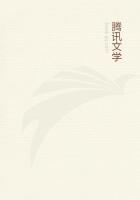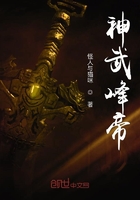[7] See Morgan, note ad loc. Berenger (i. 261) notes: "We have a small chain in the upset or hollow part of our bits, called a 'Player,' with which the horse playing with his tongue, and rolling it about, keeps his mouth moist and fresh; and, as Xenophon hints, it may serve likewise to fix his attention and prevent him from writhing his mouth about, or as the French call it, 'faire ses forces.'"To explain what is meant by flexible and stiff as applied to a bit, wewill describe the matter. A flexible bit is one in which the axles have their points of junction broad and smooth,[8] so as to bend easily; and where the several parts fitting round the axles, being large of aperture and not too closely packed, have greater flexibility; whereas, if the several parts do not slide to and fro with ease, and play into each other, that is what we call a stiff bit. Whatever the kind of bit may be, the rider must carry out precisely the same rules in using it, as follows, if he wishes to turn out a horse with the qualities described. The horse's mouth is not to be pulled back too harshly so as to make him toss his head aside, nor yet so gently that he will not feel the pressure. But the instant he raises his neck in answer to the pull, give him the bit at once; and so throughout, as we never cease repeating, at every response to your wishes, whenever and wherever the animal performs his service well,[9] reward and humour him. Thus, when the rider perceives that the horse takes a pleasure in the high arching and supple play of his neck, let him seize the instant not to impose severe exertion on him, like a taskmaster, but rather to caress and coax him, as if anxious to give him a rest. In this way the horse will be encouraged and fall into a rapid pace.
[8] i.e. "the ends of the axles (at the point of junction) which work into each other are broad and smooth, so as to play freely at the join."[9] "Behaves compliantly."
That a horse takes pleasure in swift movement, may be shown conclusively. As soon as he has got his liberty, he sets off at a trot or gallop, never at a walking pace; so natural and instinctive a pleasure does this action afford him, if he is not forced to perform it to excess; since it is true of horse and man alike that nothing is pleasant if carried to excess.[10]
[10] L. Dind. cf. Eur. "Med." 128, {ta de' uperballont oudena kairon}.
But now suppose he has attained to the grand style when ridden--we have accustomed him of course in his first exercise to wheel and fall into a canter simultaneously; assuming then, he has got that lesson well by heart,if the rider pulls him up with the bit while simultaneously giving him one of the signals to be off, the horse, galled on the one hand by the bit, and on the other collecting himself in obedience to the signal "off," will throw forward his chest and raise his legs aloft with fiery spirit; though not indeed with suppleness, for the supple play of the limbs ceases as soon as the horse feels annoyance. But now, supposing when his fire is thus enkindled[11] you give him the rein, the effect is instantaneous. Under the pleasurable sense of *******, thanks to the relaxation of the bit, with stately bearing and legs pliantly moving he dashes forward in his pride, in every respect imitating the airs and graces of a horse approaching other horses. Listen to the epithets with which spectators will describe the type of horse: the noble animal! and what willingness to work, what paces,[12] what a spirit and what mettle; how proudly he bears himself[13]--a joy at once, and yet a terror to behold.
[11] Cf. "Hell." V. iv. 46, "kindled into new life." [12] {ipposten}, "a true soldier's horse."[13] {sobaron}, "what a push and swagger"; {kai ama edun te kai gorgon idein}, "a la fois doux et terrible a voir," see Victor Cherbuliez, "Un Cheval de Phidias," p. 148.
Thus far on this topic; these notes may serve perhaps to meet a special need.















